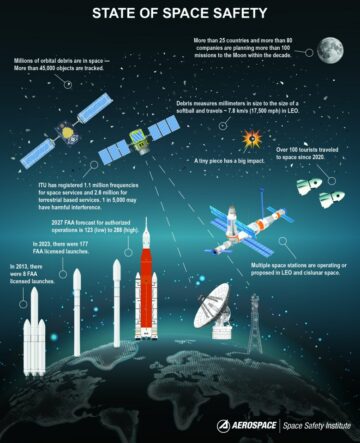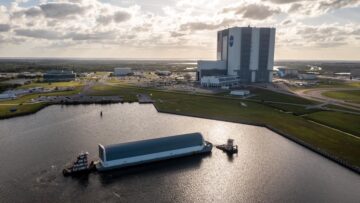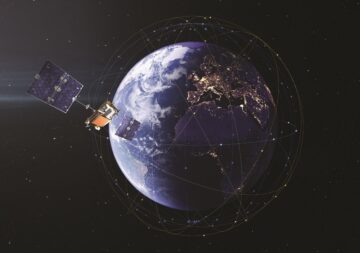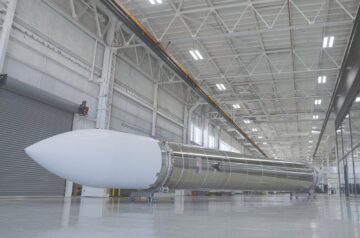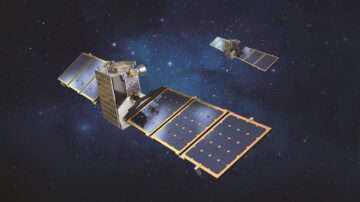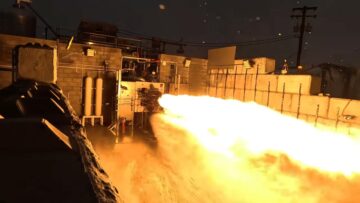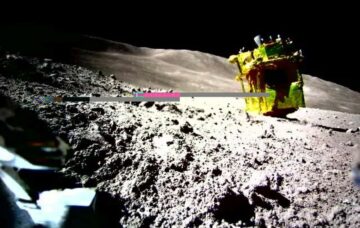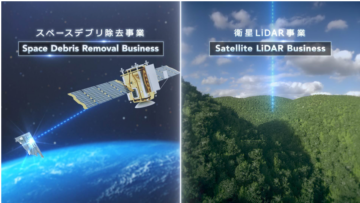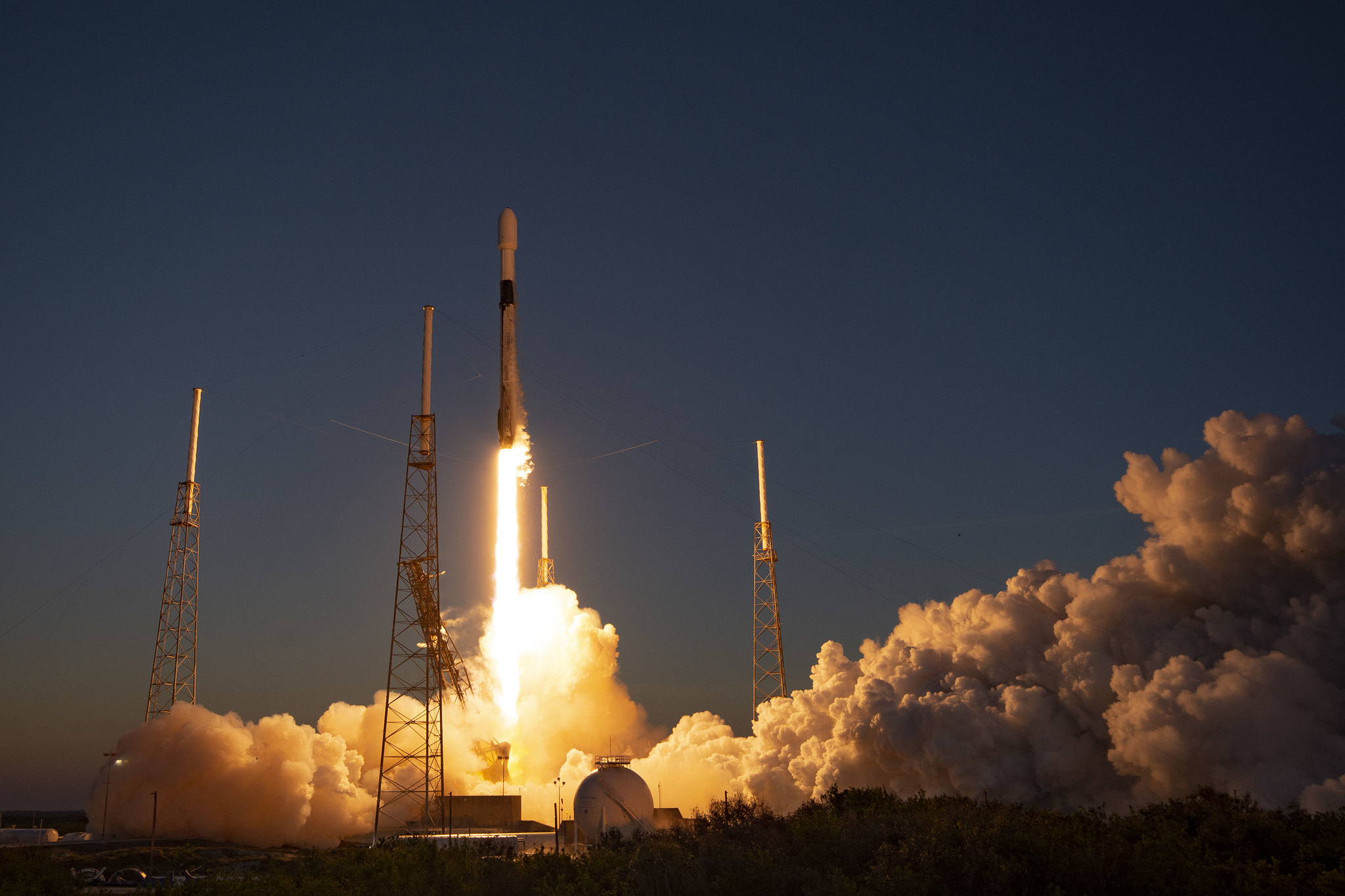
The Space Force next year will select launch providers for Phase 3 of the National Security Space Launch (NSSL) program. Industry proposals are due Dec. 15.
This next phase of NSSL marks a significant evolution in how the Space Force approaches launch, leaning into the commercial market in a way that it had largely avoided in the past.
The Space Force in this procurement is hedging against future uncertainty, trying to capitalize on commercial launch and build out for the future.
To recap the strategy for Phase 3, it is divided into two lanes.
The first is for more risk-tolerant missions, with upwards of 30 flights projected between 2025 and 2034. Any company with a launch vehicle that meets the minimum performance requirement and has either previously launched to orbit — or has a plan to launch within 12 months of the Dec. 15 proposal submission — is eligible for this lane.
Companies like ABL Systems, Firefly Aerospace, and Rocket Lab are expected to bid for Lane 1’s indefinite delivery/indefinite quantity contract, as are the large launch providers — SpaceX, United Launch Alliance, and possibly Blue Origin.
Lane 2 is open to heavy lift launch providers capable of meeting all the NSSL requirements, including being able to deliver payloads to the government’s 12 reference orbits. To bid, providers must be certified or have an approved certification Plan.
In 2020, ULA and SpaceX won Phase 2 NSSL launch contracts and are, at present, the only two companies who have been previously certified to fly these high-end missions, albeit ULA did this using its legacy Atlas and Delta launch systems and has not yet achieved certification of its new Vulcan launch vehicle.
This new solicitation also opens the door for a potential third vendor, with most analysts expecting Jeff Bezos’ Blue Origin to compete for this additional slot with its still-in-development New Glenn rocket. To qualify, Blue Origin must have a credible plan to achieve certification by October 2026.
In addition to launch awards, the three potential awardees for this heavy-lift lane will receive up to $100 million per year for Launch Service Support, which pays for the military’s unique launch requirements such as bi-coastal ranges, vertical integration, and increased mission assurance requirements.
The Space Force’s embrace of competition within the commercial launch market has been a slow and in many ways painful process. Elon Musk’s SpaceX had to sue the Air Force to break ULA’s monopoly on national security launch and has since become a dominant provider of reusable launch for the Space Force — becoming an “accidental monopoly,” according to SpaceNews.
Having multiple launch options will become even more significant as Space Force plans for Space Access, Mobility, and Logistics (SAML) take shape, potentially creating a demand for more in-orbit activity.
Phase 3 reflects the diversity of the launch missions the Space Force needs — high mission assurance, heavy-lift for exquisite satellites as well as high flight rate for larger numbers of smaller, disaggregated satellites that the Space Development Agency is pursuing.
The strategy is not without risks
The Phase 3 RFP allows the Space Force to select only two providers for Lane 2 if a third is deemed unviable. However, there is a real risk that only one vendor could be viable in the early portion of the contract term. ULA’s Vulcan Centaur is well behind schedule and ULA’s commercial book of business is facing an increasingly competitive market. Should delays affect Blue Origin’s certification of New Glenn, SpaceX may be the only company standing, and could find its own ability to deliver both government and commercial launches strained.
Lane 1 is, arguably, an equally important step toward greater competition and faster turnaround times for launch — whether solo-payload or via rideshare. This portion of the NSSL procurement also faces risks, including limited numbers of proven providers.
How the Space Force manages the large providers competing in Lane 2 and also participating in the Lane 1 solicitation remains to be seen.
A key question here is whether government payload program managers will accept a more risk tolerant approach to launch even if it comes with significant cost savings and greater launch options.
Lower launch prices are especially relevant to an era of proliferated, small satellite constellations. The Space Development Agency has outlined lower-cost launch as an essential element of its approach. It remains to be seen whether small and medium class launch vehicles can economically compete with larger launch systems. This is a particularly interesting question with respect to launching proliferated systems like SDA’s.
Risks beyond contracting
The strategic competition between the United States and China is driving increased demand for launch through requirements for more in-space capability and capacity. The need for more responsive launch to address emergent security situations or requirements (or to replace lost assets) means there will need to be a greater diversity of competitors.
The Space Force’s strategic considerations are occurring at a time when the commercial and civil demand also are taking off, creating added pressure in the market.
The contracting and acquisition part of national security space are indeed only one part of the challenge facing the enterprise. Now more than ever national security launch is intimately connected to the broader commercial launch market and its attendant requirements.
As evidenced by the recent congressional hearing about launch licensing, the administrative and bureaucratic infrastructure continues to lag launch demands. While primarily an issue for commercial launch, it is indicative of the strains that increased launch requirements are placing on structures not designed for the increased cadence of space flight. Accelerating the pace of licensing would not only benefit industry but would also have a net benefit for the national security space enterprise.
Congressional attention and interest in NSSL will remain significant. The Space Force cannot afford to get it wrong.
America’s launch infrastructure is under increasing pressure due to rising demands. The members of the Space Force’s Space Launch Delta 45 based at Cape Canaveral, Florida, are truly unsung heroes when it comes to the launch enterprise supporting not only an increased number of national security missions but also the rapidly growing commercial portfolio.
The Space Launch Delta, its infrastructure, and base resources are used across the launch enterprise, but without sustained and expanded investment, will eventually reach peak saturation, creating an upper limit on how many launches are possible or feasible.
Infrastructure limits are compounded with increasing concerns about launch site resiliency from natural (and potentially human-caused events). Climate change and rising sea-levels, something about which the Cape is very aware and working to offset, imperils the future of the launch site, perhaps not within the lifetime of Phase Three, but certainly beyond.
Lane 1 does allow for launches from any U.S. site, expanding the number of available locations. Increased geopolitical tensions could also result in overt targeting of our national launch infrastructure, with few fallback options under the present architecture. Diversification is, therefore, critical.
The impact of supply chain instability on the launch enterprise cannot be ignored either.
Helium, vital for space launch, is under increasing pressure (both literally and figuratively) due to greater demands on finite resources. The vulnerability of America’s semiconductors supply chain is well-known and efforts are underway to solidify this segment, but it remains overwhelmingly reliant on Taiwan and China.
Critical minerals for batteries and electric vehicles are dominated by manufacturing and refining in China, which is also highly exposed to geopolitical instability. In late October, Beijing announced curbs on the export of graphite in response to efforts by Washington to limit China’s access to advanced microelectronics.
How the market evolves is also an open question.
The demand for launches is increasing, and supply overwhelmingly comes from a very small number of providers. The Space Force is hedging its bets and working to ensure that the national security missions are met at a time of increased commercial demand.
There is, equally, a possibility of a glut of launch capability should the planned mega-constellations beyond Starlink, such as Amazon’s Kuiper, fail to achieve market viability or should investors’ enthusiasm for space take a downturn.
Phase Four?
It may be too early to speculate about what NSSL Phase 4 will entail. It will surely have to address changes in the launch market. As with mission assurance categorizations, these scenarios could be categorized as gold, silver, and bronze.
Gold: Phase 3 proves to be a success with Lane 2 delivering the high-end missions and Lane 1 providing a pathway for emerging launch vendors. The marketplace remains healthy and competitive and the government’s efforts to secure its own launch services slowly migrate toward truly commercial pricing for reusable rockets.
The $100 million in mission assurance costs per year are reduced through proven efficiencies and greater data availability, meaning the government gets better value. The government embraces a fully blended model of disaggregated large constellations and exquisite capabilities, ensuring sustained demand over the duration of the contract, meaning more competition for more launches.
This scenario would also see the emergence of viable in-space transportation options that promise even more optionality when coupled with low-cost, reusable launch systems.
Silver: The government stays the course in Phase 4, making few significant changes. The marketplace experiences some consolidation, but the high-end of launch has three main competitors with the Lane 1 seeing a small number of healthy entrants. The pathway created by NSSL for new launch providers remains open, but there are fewer attempts at on-ramping due to the costs associated with building out a wholly new launch program and challenging market conditions for capital.
Government demand does increase, but not to the extent advocates hoped, as the pursuit of a blended architecture of proliferated constellations and high-end exquisite capabilities remains stalled, emphasizing the latter over the former.
Bronze: Phase 3 fails to achieve liftoff in the way that program proponents expected. Aggressive market consolidation due to the absence of viable commercial models by some participants, significant delays, or failures (launch or otherwise) results in a retrenchment of the market. In a worst-case scenario, the government, alarmed by these downturns, returns to block-buy models of launch acquisition seeking to own the rockets rather than use launch as a service.
Despite evidence to the contrary, the government remains focused on larger satellites and proliferated constellations are only useful for a few, select missions. And only one or two successful competitors are delivering services.
Lean further into commercialization
Perhaps the greatest risk is that the Space Force assumes that it has successfully and totally solved launch.
If anything, the process to develop Phase 3 needs to continue well into Phase 4 and beyond. To the Space Force’s credit, the current RFP reflects lessons learned from Phase 2 and a nascent understanding — albeit a hesitant one — of the current market dynamics and forces.
This is no small feat, as the RFP is attempting to anticipate where the launch market will be.
If anything, the Space Force needs to lean further into the commercialization and increased competition for space transportation services.
China’s increasingly aggressive posture on orbit and launch tempo means America will need a healthy and robust enterprise to place, and potentially relocate, assets into mission-relevant orbits as quickly as possible. The Space Force cannot do this alone and cannot meet its own requirements by seeing launch as a stand-alone product. Rather, it must see it as part of a larger space transportation architecture supporting an agile and resilient enterprise.
Joshua C. Huminski (@joshuachuminski) is director of the Mike Rogers Center for Intelligence & Global Affairs at the Center for the Study of the Presidency & Congress, and a George Mason University National Security Institute senior fellow.
- SEO Powered Content & PR Distribution. Get Amplified Today.
- PlatoData.Network Vertical Generative Ai. Empower Yourself. Access Here.
- PlatoAiStream. Web3 Intelligence. Knowledge Amplified. Access Here.
- PlatoESG. Carbon, CleanTech, Energy, Environment, Solar, Waste Management. Access Here.
- PlatoHealth. Biotech and Clinical Trials Intelligence. Access Here.
- Source: https://spacenews.com/op-ed-space-force-launch-strategy-a-step-in-the-right-direction/
- :has
- :is
- :not
- :where
- $100 million
- $UP
- 1
- 12
- 12 months
- 15%
- 2020
- 2025
- 2026
- 30
- a
- ability
- Able
- About
- accelerating
- Accept
- access
- Achieve
- achieved
- acquisition
- across
- activity
- added
- addition
- Additional
- address
- administrative
- advanced
- advocates
- Aerospace
- Affairs
- affect
- afford
- against
- agency
- aggressive
- agile
- AIR
- Air Force
- alarmed
- All
- Alliance
- allow
- allows
- alone
- also
- america
- an
- and
- anticipate
- any
- anything
- approach
- approaches
- approved
- architecture
- ARE
- arguably
- AS
- Assets
- associated
- assumes
- assurance
- At
- atlas
- attempting
- Attempts
- attention
- availability
- available
- avoided
- awards
- aware
- base
- based
- batteries
- BE
- become
- becoming
- been
- Beijing
- being
- benefit
- Bets
- Better
- between
- Beyond
- bid
- Blue
- blue origin
- book
- both
- Break
- broader
- build
- Building
- bureaucratic
- business
- but
- by
- Cadence
- CAN
- cannot
- capabilities
- capability
- capable
- Capacity
- cape
- capital
- capitalize
- Center
- certainly
- Certification
- Certified
- chain
- challenge
- challenging
- change
- Changes
- China
- Chinas
- civil
- class
- Climate
- Climate change
- comes
- commercial
- commercialization
- Companies
- company
- compete
- competing
- competition
- competitive
- competitors
- Concerns
- conditions
- Congress
- connected
- considerations
- consolidation
- continue
- continues
- contract
- contracting
- contracts
- contrary
- Cost
- cost savings
- Costs
- could
- coupled
- course
- created
- Creating
- credible
- credit
- critical
- Current
- data
- deemed
- delays
- deliver
- delivering
- Delta
- Demand
- demands
- designed
- develop
- Development
- DID
- direction
- Director
- diversification
- Diversity
- divided
- do
- does
- dominant
- Door
- DOWNTURN
- downturns
- driving
- due
- duration
- dynamics
- Early
- efficiencies
- efforts
- either
- Electric
- electric vehicles
- element
- eligible
- Elon
- Elon Musk’s
- embrace
- Embraces
- emergence
- emerging
- emphasizing
- ensure
- ensuring
- Enterprise
- entrants
- equally
- Era
- especially
- essential
- Ether (ETH)
- Even
- events
- eventually
- EVER
- evidence
- evidenced
- evolution
- evolves
- expanded
- expanding
- expected
- Experiences
- export
- exposed
- exquisite
- extent
- faces
- facing
- FAIL
- fails
- faster
- feasible
- feat
- fellow
- few
- fewer
- Find
- firefly aerospace
- First
- flight
- Flights
- florida
- focused
- For
- Force
- Forces
- Former
- four
- from
- FT
- fully
- further
- future
- geopolitical
- George
- get
- Global
- Gold
- Government
- greater
- greatest
- Growing
- had
- Have
- healthy
- heavy
- hedging
- here
- Heroes
- Hesitant
- High
- High-End
- highly
- How
- However
- HTTPS
- if
- Impact
- important
- in
- Including
- Increase
- increased
- increasing
- increasingly
- indeed
- indicative
- industry
- Infrastructure
- instability
- Institute
- integration
- Intelligence
- interest
- interesting
- intimately
- into
- investment
- issue
- IT
- ITS
- jpg
- Key
- lab
- Lane
- large
- largely
- larger
- Late
- launch
- launched
- launches
- launching
- learned
- Legacy
- Lessons
- Lessons Learned
- Licensing
- lifetime
- like
- LIMIT
- Limited
- limits
- locations
- lost
- low-cost
- Main
- Making
- Managers
- manages
- manufacturing
- many
- Market
- market conditions
- marketplace
- Mason
- May..
- meaning
- means
- medium
- Meet
- meeting
- Meets
- Members
- met
- migrate
- mike
- million
- minerals
- minimum
- Mission
- missions
- mobility
- model
- models
- months
- more
- most
- multiple
- must
- nascent
- National
- national security
- Natural
- Need
- needs
- net
- New
- next
- no
- now
- number
- numbers
- occurring
- october
- of
- off
- offset
- on
- ONE
- only
- Op-ed
- open
- opens
- Options
- or
- Orbit
- Origin
- otherwise
- our
- out
- outlined
- over
- overwhelmingly
- own
- Pace
- painful
- part
- participants
- participating
- particularly
- past
- pathway
- pays
- Peak
- per
- performance
- perhaps
- phase
- Place
- placing
- plan
- planned
- plans
- plato
- Plato Data Intelligence
- PlatoData
- portfolio
- possibility
- possible
- possibly
- potential
- potentially
- present
- pressure
- previously
- Prices
- pricing
- primarily
- process
- procurement
- Product
- Program
- projected
- promise
- proponents
- proposal
- Proposals
- proven
- proves
- provider
- providers
- providing
- pursuing
- pursuit
- qualify
- quantity
- question
- quickly
- rapidly
- Rate
- rather
- reach
- real
- recap
- receive
- recent
- Reduced
- reference
- refining
- reflects
- relevant
- remain
- remains
- replace
- requirement
- Requirements
- resilient
- Resources
- respect
- response
- responsive
- result
- Results
- RETRENCHMENT
- returns
- reusable
- right
- rising
- Risk
- risks
- robust
- rocket
- Rogers
- s
- satellite
- satellites
- Savings
- scenario
- scenarios
- schedule
- secure
- security
- see
- seeing
- seeking
- seen
- segment
- Semiconductors
- senior
- service
- Services
- Shape
- should
- significant
- Silver
- since
- site
- situations
- slot
- slow
- Slowly
- small
- smaller
- solicitation
- solidify
- some
- something
- Space
- Space Force
- SpaceNews
- SpaceX
- standing
- starlink
- States
- Step
- Strains
- Strategic
- Strategy
- structures
- Study
- submission
- success
- successful
- Successfully
- such
- supply
- supply chain
- support
- Supporting
- surely
- sustained
- Systems
- Taiwan
- Take
- taking
- targeting
- Tempo
- tensions
- term
- than
- that
- The
- The Future
- There.
- therefore
- These
- Third
- this
- three
- Through
- time
- times
- to
- too
- TOTALLY
- toward
- transportation
- transportation services
- truly
- trying
- two
- u.s.
- Uncertainty
- under
- understanding
- Underway
- unique
- United
- United States
- university
- upwards
- use
- used
- useful
- using
- value
- vehicle
- Vehicles
- vendor
- vendors
- vertical
- very
- via
- viability
- viable
- vital
- vulcan
- vulnerability
- washington
- Way..
- ways
- WELL
- well-known
- What
- when
- whether
- which
- while
- WHO
- wholly
- will
- with
- within
- without
- Won
- working
- would
- Wrong
- year
- yet
- zephyrnet

